#Scientific instruments
Explore tagged Tumblr posts
Text
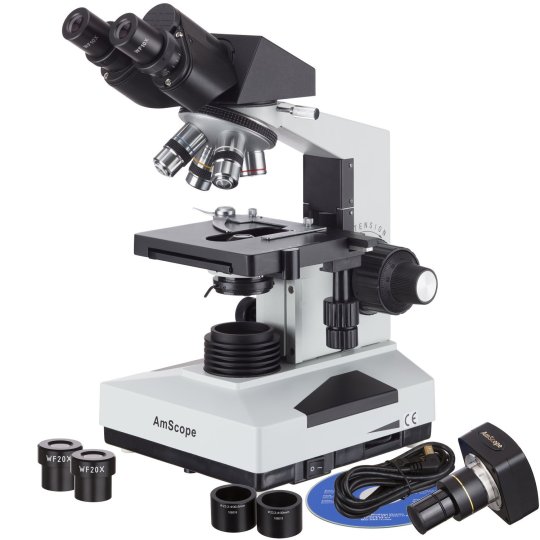
43 notes
·
View notes
Text



Contact (1997) Wormhole Machine Pod.
Production Design: Ed Verreaux
Concept Art: Steve Burg
#mechanical design#industrial architecture#sci fi imagery#scientific instruments#tech#mechanical details#cores#contact
27 notes
·
View notes
Text
Damn bro they really do undersell the benefits of relaxing and repetitive tasks, last night I got into the groove calibrating a bunch of oscilloscope probes and it was like a massage for my brain
6 notes
·
View notes
Text
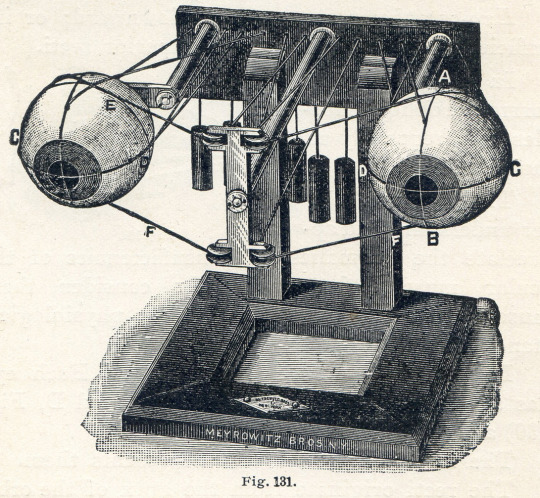
Quit yer eyeballin’ me, boy!
#scientific instruments#vintage illustration#illustration#scientific illustration#funny#humor#humour
27 notes
·
View notes
Text
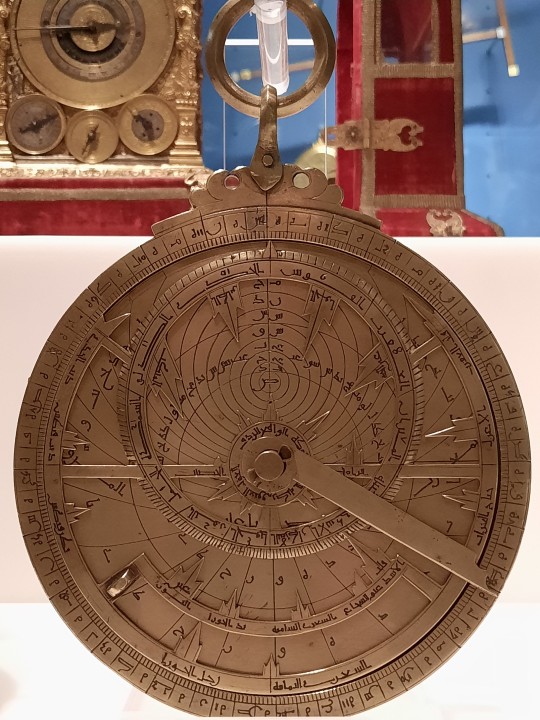
Astrolabe, Arabic, 10th C.
On display in the Museo Galileo, Florence
#scientific instruments#astrolabe#history of science#Museo Galileo#Florence#photography#personal collection
9 notes
·
View notes
Text
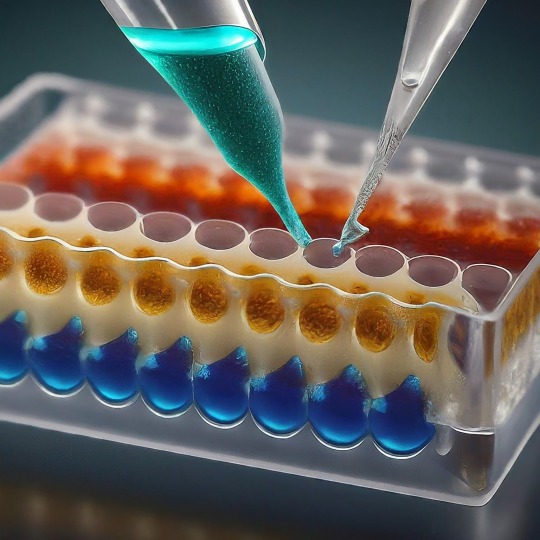
ELISA: A Powerful Tool for Detecting the Invisible
ELISA, or Enzyme-Linked Immunosorbent Assay, has become a cornerstone of medical diagnostics and biological research. This versatile technique allows scientists to detect and quantify minute amounts of target molecules, such as proteins, antibodies, and even viruses, with remarkable accuracy. In this blog, we'll delve into the world of ELISA, exploring its various types, its applications, and the exciting future directions this technology holds.
At its core, ELISA relies on the exquisite specificity of antibodies. Antibodies are highly specialized proteins produced by the immune system in response to foreign invaders. Each antibody can bind to a unique structure, called an antigen, on a specific molecule. In an ELISA, scientists leverage this binding property to create a sensitive detection system.
The 1960s witnessed a surge in interest in immunoassays, techniques that utilize the specificity of antibodies to detect target molecules. One such technique, radioimmunoassay (RIA), developed by Rosalyn Yalow and Solomon Berson, revolutionized medical diagnostics. RIA used radioactively labeled antibodies to detect antigens, offering high sensitivity. However, concerns regarding the safety of radioactive materials fueled the search for a safer alternative. The year 1971 marked a turning point. Independently, Eva Engvall and Peter Perlmann published their work on a novel technique – the enzyme-linked immunosorbent assay (ELISA). ELISA replaced radioactive labels with enzymes, eliminating the safety concerns associated with RIA. Like RIA, ELISA harnessed the specific binding between antibodies and antigens. However, it employed enzymes that could generate a detectable signal, such as a color change, upon interacting with a substrate. This innovation paved the way for a safer and more user-friendly diagnostic tool.
The basic ELISA protocol involves immobilizing the target antigen on a solid surface like a plate well. Then, a sample containing the molecule of interest (e.g., a suspected virus) is introduced. If the target molecule is present, it will bind to the immobilized antigen. Next, an antibody specific to the target molecule, linked to an enzyme, is introduced. This "detection antibody" binds to the target molecule already attached to the antigen. Finally, a substrate specific to the enzyme is added. This antigen-antibody binding is visualized using an enzyme linked to a reporter molecule. When the enzyme encounters its substrate, a detectable signal is produced, such as a color change or luminescence. The intensity of this signal is directly proportional to the amount of antigen present in the sample, allowing for quantification. The beauty of ELISA lies in its adaptability. Several variations exist, each tailored for specific detection needs.
The Four Main ELISA Formats are:
Direct ELISA: Simplicity at its finest. In this format, the antigen is directly coated onto the ELISA plate. A labeled antibody specific to the antigen is then introduced, binding directly to its target. After washing away unbound molecules, the enzyme linked to the antibody generates a signal upon addition of the substrate. Direct ELISA offers a rapid and straightforward approach, but sensitivity can be lower compared to other formats due to the lack of amplification.
Indirect ELISA: Unveiling the Power of Amplification. Similar to the direct ELISA, the antigen is first coated onto the plate. However, instead of a labeled primary antibody, an unlabeled one specific to the antigen is used. This is followed by the introduction of a labeled secondary antibody that recognizes the species (e.g., mouse, rabbit) of the primary antibody. This two-step approach acts as an amplification strategy, significantly enhancing the signal compared to the direct ELISA. However, the presence of an extra incubation step and the potential for cross-reactivity with the secondary antibody add complexity.
Sandwich ELISA: Capturing the Antigen Between Two Antibodies. Here, the capture antibody, specific for one region of the antigen, is pre-coated onto the ELISA plate. The sample containing the antigen is then introduced, allowing it to be "sandwiched" between the capture antibody and a detection antibody specific for a different region of the same antigen. A labeled secondary antibody or a labeled detection antibody itself can then be used to generate the signal. Sandwich ELISA boasts high sensitivity due to the double-antibody recognition and is often the preferred format for quantifying analytes.
Competitive ELISA: A Race for Binding Sites. In this format, the antigen competes with a labeled antigen (usually a known amount) for binding sites on a capture antibody pre-coated onto the plate. The more antigen present in the sample, the less labeled antigen can bind to the capture antibody. Following a washing step, the amount of bound labeled antigen is measured, providing an inverse relationship between the signal and the concentration of antigen in the sample. Competitive ELISA is particularly useful for studying small molecules that may be difficult to directly conjugate to an enzyme.
ELISA's Reach: From Diagnostics to Research. The applications of ELISA are as vast as they are impressive. Let's delve into some key areas where ELISA plays a vital role:
Unveiling the Mysteries of Disease: Diagnostics: ELISA is a cornerstone of diagnosing infectious diseases like HIV, Hepatitis, and Lyme disease. It detects antibodies produced by the body in response to the invading pathogen, providing valuable information for early detection and treatment. Monitoring Autoimmune Diseases: ELISA helps monitor autoimmune diseases like rheumatoid arthritis and lupus by measuring specific antibodies associated with these conditions. Cancer Screening: Certain cancers can be detected by identifying tumor markers, proteins elevated in the blood of cancer patients. ELISA assays are being developed to detect these markers for early cancer screening.
Safeguarding Food Quality: Allergen Detection: Food allergies can be life-threatening. ELISA ensures food safety by enabling the detection of allergens like peanuts, gluten, and milk in food products, protecting consumers with allergies. Monitoring Foodborne Pathogens: ELISA can identify harmful bacteria, viruses, and toxins in food, preventing outbreaks of foodborne illnesses.
Environmental Monitoring: Pollutant Detection: ELISA can detect pollutants like pesticides and herbicides in water and soil samples, contributing to environmental protection efforts. Microbial Analysis: This technique can be used to identify and quantify specific microbes in environmental samples, providing insights into ecosystem health.
Research and Development: ELISA plays a crucial role in various research fields: Drug Discovery: It helps researchers assess the effectiveness of new drugs by measuring drug-target interactions and monitoring drug levels in the body. Vaccine Development: ELISA is instrumental in developing vaccines by evaluating immune responses to vaccine candidates. Basic Research: Scientists use ELISA to study various biological processes by detecting and quantifying specific molecules involved in these processes.
Despite its established role, ELISA is evolving alongside technological advancements. New multiplex platforms allow for the simultaneous detection of various targets in a single sample, boosting efficiency in biomarker discovery and disease analysis. Automation streamlines workflows minimizes errors, and increases throughput, making high-throughput screening feasible in drug development and clinical settings. Miniaturization and portable devices enable rapid on-site diagnostics, providing healthcare professionals with real-time data for quicker interventions. Additionally, ongoing research is improving assay sensitivity, reducing background noise, and expanding detection limits, allowing for the identification of trace analytes and early disease biomarkers with greater accuracy than ever before. Integration of ELISA with emerging technologies such as microfluidics, nanotechnology, and artificial intelligence holds promise for enhancing assay performance, scalability, and data analysis capabilities.
These advancements hold promise for even wider applications of ELISA in the future. ELISA has revolutionized our ability to detect and quantify biological molecules. Its versatility, accuracy, and adaptability make it an invaluable tool across various scientific disciplines. As research continues to refine and innovate ELISA techniques, we can expect even more exciting possibilities to emerge in the years to come. ELISA's future is bright, promising to play a pivotal role in unraveling the mysteries of the biological world and improving human health.
#science sculpt#life science#molecular biology#science#biology#artists on tumblr#ELISA#immunology#immunotherapy#diagnostic management software#diagnosticimaging#history of immunology#scientific advancements#biotechnology#scientific research#scientific equipment#scientific instruments#techniques in biotechnology#scientific illustration#lab equipment#sciencenature#laboratory#lab skills#molecular diagnostics market
10 notes
·
View notes
Text
youtube
What Are the Benefits of Using the AKF-100L Double-Glazed Reactor for Advanced Chemical Reactions?
The AKF-100L Double-Glazed Reactor is a high-performance solution for chemical reactions, offering precise temperature control ranging from -120°C to 300°C. It features:
100L material capacity & 60L jacket capacity for efficient heating and cooling.
6 customizable ports for versatile experimental setups.
Stainless steel fluoropolymer-coated stirrer for reliable mixing.
5L constant pressure funnel to enhance reaction efficiency.
Optional explosion-proof control box, explosion-proof motor, and insulation sheath for added safety.
Ideal for labs that require precision and safety, the AKF-100L Reactor is perfect for a wide range of chemical and pharmaceutical applications.
Explore more: AKF-100L Double-Glazed Reactor
#Chemical Reactor#Laboratory Equipment#Double-Glazed Reactor#Chemical Engineering#Temperature Control#Explosion-Proof Equipment#Pharmaceutical Manufacturing#Lab Stirrer#Scientific Instruments#Reactors for Laboratories#Youtube
3 notes
·
View notes
Text






George Gabb – Scientist of the Day
George Hugh Gabb, a British collector of scientific instruments, is a mystery man.
read more...
#George Gabb#scientific instruments#Royal Museums Greenwich#histsci#histSTM#20th century#history of science#Ashworth#Scientist of the Day
5 notes
·
View notes
Text
youtube
The confocal microscope at Imperial College's Sir Alexander Fleming Building lab is used for imaging the interior of living plant and animal cells.
During my PhD project, I used the confocal microscope to view the interior of Nicotiana benthamiana plant cells which were expressing Green Fluorescent Protein (GFP) tagged genes of interest. I aimed to find out where the proteins encoded by the genes of interest were localised in the plant cell, which turned out to be in the cytoplasm.
From Wikipedia's entry on Confocal Microscopy: "Confocal microscopy, most frequently confocal laser scanning microscopy (CLSM) or laser scanning confocal microscopy (LSCM), is an optical imaging technique for increasing optical resolution and contrast of a micrograph by means of using a spatial pinhole to block out-of-focus light in image formation. Capturing multiple two-dimensional images at different depths in a sample enables the reconstruction of three-dimensional structures (a process known as optical sectioning) within an object. This technique is used extensively in the scientific and industrial communities and typical applications are in life sciences, semiconductor inspection and materials science. Light travels through the sample under a conventional microscope as far into the specimen as it can penetrate, while a confocal microscope only focuses a smaller beam of light at one narrow depth level at a time. The CLSM achieves a controlled and highly limited depth of field."
Music by the Fiechter Brothers
Images by Katia Hougaard & the Facility for Imaging by Light Microscopy at Imperial College London
#katia plant scientist#botany#plant biology#plants#plant science#biology#science#science and technology#confocal microscopy#microscopy#microscope#scientific instruments#laboratory#research#phdblr#phd#phd life#molecular biology#cell biology#green fluorescent protein#plant scientist#Youtube
4 notes
·
View notes
Text
Labmate Listed on showmelocal
Hello👋 everyone we are on showmelocal please like and add a review which will be very helpful.😊 Please find the link👍
#Lab Equipment#Scientific Instruments#showmelocal#Laboratory Equipment#Autoclave#Horizontal Autoclave#Medical Autoclave
2 notes
·
View notes
Text

List of scientific instruments and their common uses.
https://www.chemistrynotesinfo.com/2024/01/List-of-scientific-instruments-and-their-uses.html
#scientificinstruments #science #scientist #scientific #instruments
2 notes
·
View notes
Text
Chandrayaan-3: India's Historic Soft Landing on the Moon
Introduction On August 23, 2023, India made history by successfully landing the Chandrayaan-3 spacecraft on the Moon’s South Pole. This was India’s third lunar mission, and its first soft landing since Chandrayaan-2 in 2019. The successful landing of Chandrayaan-3 is a major achievement for the Indian Space Research Organization (ISRO) and a significant step forward for India’s space…
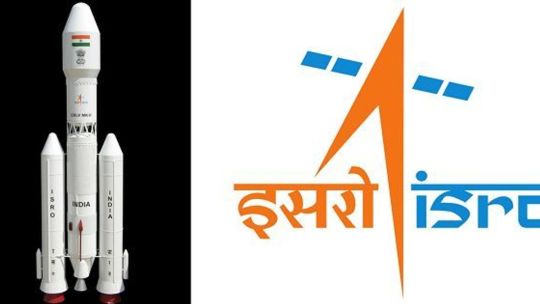
View On WordPress
#Chandrayaan-3#Chandrayaan-3 mission#India&039;s soft landing on Moon#Indian Space Research Organisation (ISRO)#lunar mission#Moon&039;s South Pole#Pragyan rover#scientific instruments#space exploration#Vikram lander
2 notes
·
View notes
Text
Top Lab Glassware Manufacturer in India
PVG International is a Top Lab Glassware Manufacturer in India, offering high-quality, precision-engineered products for scientific, educational, and industrial use. With advanced technology and strict quality standards, PVG ensures durability, accuracy, and safety in every product, serving laboratories across India and international markets with excellence and reliability. Link:-
0 notes
Text
Precision in Practice: Why Data Loggers and Anemometers Are Essential for Industry and Innovation
In an era where smart systems, sustainability, and safety define success, the demand for accurate data has never been higher. Whether it’s a construction engineer measuring wind pressure or a scientist monitoring climate change, reliable tools are required to capture and record real-world conditions with precision.

Among the most crucial instruments in this field are the Data Logger and the Anemometer. Often overlooked due to their compact size, these tools play a major role across sectors, enhancing productivity, ensuring safety, and supporting research. Let’s dive deeper into their importance, functionality, and real-world applications.
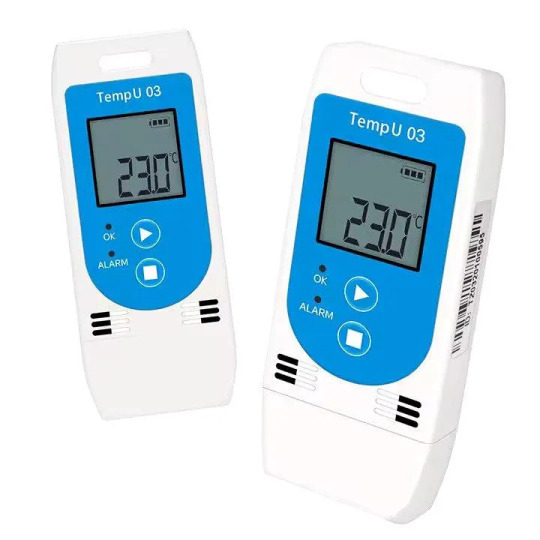
What is a Data Logger?
A Data Logger is an electronic device that records measurements over time at set intervals. It can include internal sensors, external probes, or both, depending on the application.
Common Parameters Measured:
Temperature and Humidity
Voltage and Current
Pressure and Air Quality
Light Intensity
Sound and Vibration Levels
The primary purpose of a Data Logger is to automate the process of data collection, making it more reliable, scalable, and accurate than manual methods. Most models are battery-powered and built to operate unattended in remote or sensitive environments.
Applications of Data Loggers:
Pharmaceutical Supply Chains: Monitoring temperature and humidity in vaccine transportation.
Agriculture: measuring the soil temperature and moisture to optimize irrigation.
Energy Audits: Logging power consumption in buildings and factories.
Environmental Research: Collecting long-term data for climate models.
At uniglobalbusiness, you’ll find a wide range of Data Loggers with USB, wireless, and cloud-enabled connectivity, allowing users to easily export and analyze data. Their compact form factor and rugged design make them ideal for both indoor labs and challenging outdoor environments.
What is an Anemometer?
An Anemometer is a device that is used to measure wind speed, and in some models, wind direction. It is an essential tool in meteorology, aviation, construction, and renewable energy sectors.
Types of Anemometers:
Cup Anemometers: They use rotating cups to measure wind speed.
Vane Anemometers: It combines a wind vane and a propeller for direction and speed.
Ultrasonic Anemometers: Use sound waves to detect wind flow — ideal for high-accuracy applications.
Where Are Anemometers Used?
Wind Farms: Determine optimal locations for wind turbines.
Weather Stations: Provide data for forecasting and climate modeling.
Construction Sites: Ensuring crane and equipment safety in high-wind conditions.
Agriculture: Help with time pesticide spraying and irrigation based on wind speed.
uniglobalbusiness��offers a reliable selection of portable and fixed Anemometers, suitable for both professional and academic use. Each model is chosen for durability, precision, and ease of calibration — essential traits for environments where wind data is mission-critical.
How Uniglobalbusiness Helps You Measure with Confidence
When it comes to instrumentation, reliability and service matter as much as specifications. That’s why industry professionals and researchers trust Uniglobalbusiness for their measurement needs.
Here’s what sets them apart:
Curated collections that balance affordability with performance
Products tested for industrial and academic standards
Ongoing support and transparent product information
By choosing tools from Uniglobalbusiness, you’re not just purchasing devices — you’re investing in a smoother workflow, better data accuracy, and long-term efficiency.
Final Thoughts: Why These Tools Matter Now More Than Ever
The shift toward smart, sustainable systems requires accurate environmental and operational data. Instruments like the Data Logger and Anemometer enable this shift by providing the real-time insights necessary to optimize performance, ensure safety, and support compliance.

CONTACT US
Uniglobal Business
Plot number 3 Office No : A22 ( 6th Floor) Wegmans Signature Tower Knowledge Park 3 Above Decathlon Greater Noida 201310
Email Us : [email protected]
Enquiry : +91–9278333555, 9312349595
Website:- https://uniglobalbusiness.com/
0 notes
Text

🔬 StonyLab Electrolytic Cell – Precision Reactions, Reliable Build
Available in 50 ml and 100 ml sizes, this sealed electrochemical cell features a three-electrode system, copper and platinum electrodes, and PTFE lid for enhanced control during electrolysis and experiments.
👉 https://stonylab.com/products/b09my9cs5v-electrolytic-cell
0 notes
Text
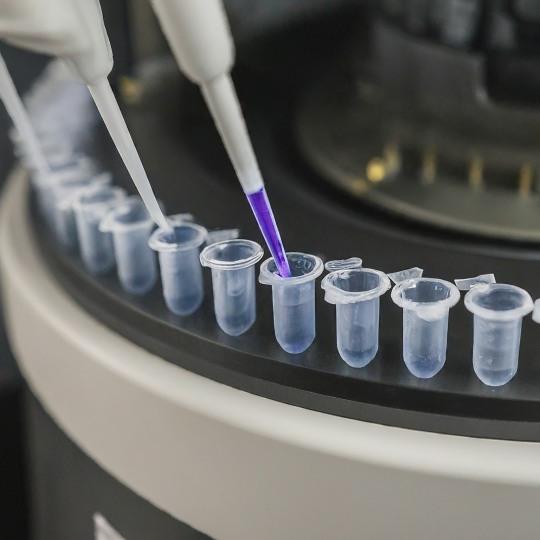
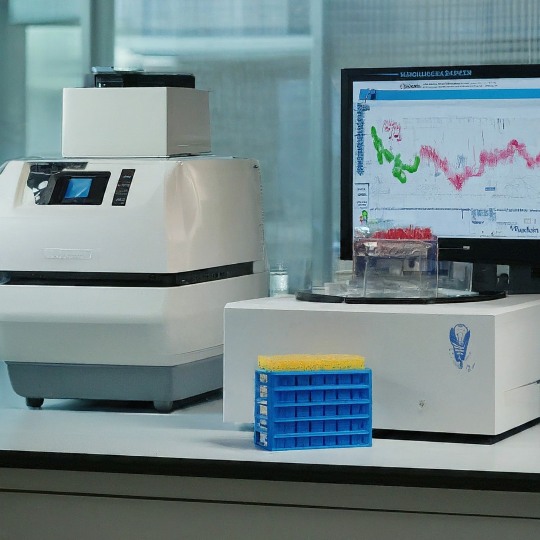
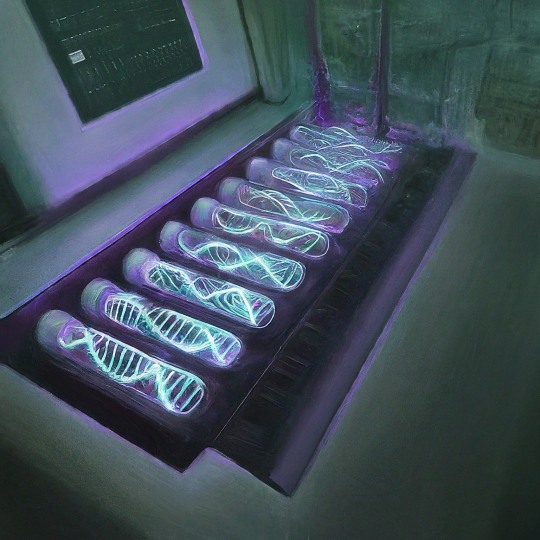
Amplifying Revolution: The Polymerase Chain Reaction (PCR)
Imagine a scenario where you have a crucial document, but there's only one fragile copy. You need numerous duplicates to analyze and share. This is exactly the challenge faced by scientists dealing with DNA. Thankfully, a revolutionary technique called Polymerase Chain Reaction (PCR) comes to the rescue. PCR, often referred to as molecular photocopying, is a fundamental tool in molecular biology. It allows scientists to exponentially amplify a specific DNA segment, creating millions of copies from a minuscule sample. This has revolutionized various fields, from diagnosing diseases to unraveling genetic mysteries.
The credit for inventing PCR is widely attributed to Kary Mullis, a biochemist working at Cetus Corporation in the early 1980s. Inspired by his nighttime drives through California, Mullis envisioned a method for exponentially copying DNA segments through repeated cycles of heating, annealing (primer attachment), and extension (polymerase-mediated DNA synthesis). This elegant concept became the foundation of PCR. Mullis's concept was brilliant, but a crucial hurdle remained. The process required a DNA polymerase enzyme that could withstand repeated heating and cooling cycles. The solution came from an unexpected source: hot springs. In 1976, researchers discovered Taq polymerase, a heat-stable enzyme isolated from the thermophilic bacterium Thermus aquaticus. This discovery was a game-changer, as Taq polymerase could function optimally during the high-temperature steps of PCR. In recognition of its transformative impact on science, Kary Mullis was awarded the Nobel Prize in Chemistry in 1993, alongside Michael Smith, who pioneered site-directed mutagenesis.
While the core concept of PCR was established, the technique required further refinement. Pioneering researchers like Henry Erlich at Cetus played a vital role in optimizing reaction conditions, automating the process, and developing the now-ubiquitous thermal cyclers that precisely control the temperature changes needed for PCR. The 1980s and 1990s witnessed a surge in PCR applications. In 1985, PCR was used for the first time to analyze sickle cell anemia, demonstrating its potential for clinical diagnostics. Forensic science embraced PCR in 1987, with the successful amplification of DNA from a single human hair. By 1989, highly sensitive DNA fingerprinting techniques based on PCR became a game-changer in criminal investigations.
At the heart of PCR lies a clever exploitation of the natural process of DNA replication. The key players in this drama are:
Template DNA: The DNA sequence that contains the target region to be amplified
Primers: Short sequences of nucleotides that flank the target DNA region and serve as starting points for DNA synthesis.
DNA Polymerase: Enzyme responsible for synthesizing new DNA strands by extending the primers using nucleotides.
Nucleotides: The building blocks of DNA, including adenine (A), thymine (T), cytosine (C), and guanine (G).
Buffer Solution: Provides optimal conditions for the enzymatic reactions to occur.
Thermal Cycler: Instrumentation used to automate the PCR process by cycling through different temperatures.
At its core, PCR mimics the natural process of DNA replication within an organism. However, PCR condenses this complex process into a series of controlled steps carried out within a test tube. Here's a breakdown of the PCR cycle:
Denaturation: The first step involves heating the reaction mixture to a high temperature (usually around 95°C), causing the double-stranded DNA to separate into two single strands. This process is known as denaturation.
Annealing: The temperature is then lowered to allow the primers to bind (anneal) to their complementary sequences on the single-stranded DNA. This typically occurs around 50-65°C, depending on the primer sequences.
Extension: With the primers bound, the temperature is raised again, and DNA polymerase synthesizes new DNA strands by extending from the primers using the nucleotides present in the reaction mixture. This step occurs at a temperature optimal for the DNA polymerase enzyme, typically around 72°C.
Cycle Repetition: These three steps—denaturation, annealing, and extension—are repeated multiple times (usually 20-40 cycles), resulting in an exponential increase in the number of DNA copies. Each cycle doubles the amount of DNA, leading to millions of copies of the target sequence after just a few cycles.
The beauty of PCR lies in its repetitive nature. With each cycle, the number of copies of the target DNA segment doubles. After 30 cycles, for example, you can have billions of copies of the specific DNA region, enough for further analysis.
This versatile technique has spawned numerous variations, each tailored for a specific purpose. Let's delve into some of the most common types of PCR:
Real-Time PCR (qPCR): Real-Time PCR, or quantitative PCR (qPCR), revolutionized nucleic acid quantification by enabling the real-time monitoring of DNA amplification. This technique utilizes fluorescent reporter molecules to measure the accumulation of PCR products during each cycle. qPCR is invaluable in gene expression analysis, microbial quantification, and diagnostic assays due to its high sensitivity and quantitative capabilities.
Reverse Transcription PCR (RT-PCR): Reverse Transcription PCR combines PCR with reverse transcription to amplify RNA sequences. This technique converts RNA into complementary DNA (cDNA) using reverse transcriptase enzyme before proceeding with PCR amplification. RT-PCR is pivotal in gene expression studies, viral load quantification, and the detection of RNA viruses such as HIV and SARS-CoV-2.
Nested PCR: Nested PCR involves two rounds of amplification, with the second round using a set of nested primers that bind within the product of the first round. This nested approach increases specificity and reduces nonspecific amplification, making it ideal for detecting low-abundance targets and minimizing contamination. Nested PCR is commonly used in forensic analysis, pathogen detection, and rare allele identification.
Multiplex PCR: Multiplex PCR allows simultaneous amplification of multiple target sequences within a single reaction. This technique employs multiple primer sets, each specific to a distinct target region, enabling the detection of multiple targets in a single assay. Multiplex PCR is valuable in microbial typing, genetic screening, and detection of pathogens with complex genetic profiles.
Digital PCR (dPCR): Digital PCR partitions the PCR reaction into thousands of individual micro-reactions, each containing a single DNA template molecule or none at all. By counting the number of positive and negative partitions, dPCR accurately quantifies target DNA molecules without the need for standard curves or reference samples. This technique is useful for absolute quantification of rare targets, allelic discrimination, and copy number variation analysis.
Allele-Specific PCR: Allele-Specific PCR selectively amplifies alleles containing specific nucleotide variations, enabling the detection of single nucleotide polymorphisms (SNPs) or mutations. This technique utilizes primers designed to match the target sequence with single-base mismatches at their 3' end, allowing discrimination between different alleles. Allele-Specific PCR finds applications in genetic testing, pharmacogenomics, and population studies.
PCR's ability to amplify DNA has made it an indispensable tool in various fields. Here are a few examples of its diverse applications:
Disease Diagnosis and Surveillance: PCR plays a pivotal role in the rapid and accurate diagnosis of infectious diseases. By amplifying specific nucleic acid sequences, PCR enables the detection of pathogens with high sensitivity and specificity. PCR-based tests have become indispensable in diagnosing viral infections such as HIV, hepatitis, influenza, and COVID-19. Additionally, PCR facilitates the surveillance of disease outbreaks and the monitoring of antimicrobial resistance.
Genetic Testing and Personalized Medicine: PCR empowers genetic testing by enabling the detection of genetic mutations, polymorphisms, and variations associated with inherited diseases, cancer, and pharmacogenomics. Through techniques like allele-specific PCR and real-time PCR, researchers can identify disease-causing mutations, assess drug efficacy, and tailor treatments to individual patients. PCR-based genetic tests have transformed healthcare by enabling early disease detection, risk assessment, and personalized therapeutic interventions.
Forensic Analysis and DNA Profiling: PCR has revolutionized forensic science by enabling the analysis of minute DNA samples collected from crime scenes. Techniques like short tandem repeat (STR) analysis and multiplex PCR allow forensic experts to generate DNA profiles with high resolution and accuracy. PCR-based DNA profiling is used in criminal investigations, paternity testing, disaster victim identification, and wildlife forensics, contributing to the administration of justice and conservation efforts worldwide.
Environmental Monitoring and Microbial Ecology: PCR facilitates the study of microbial communities in diverse environments, including soil, water, air, and the human microbiome. Environmental DNA (eDNA) analysis using PCR-based methods enables the detection and characterization of microbial species, including bacteria, fungi, and archaea. PCR-based assays are employed in environmental monitoring, food safety testing, and microbial source tracking, aiding in the preservation of ecosystems and public health.
Agricultural Biotechnology and Food Safety: PCR plays a vital role in agricultural biotechnology by enabling the detection of genetically modified organisms (GMOs), plant pathogens, and foodborne pathogens. PCR-based assays are used to verify the authenticity and safety of food products, detect allergens, and monitor the presence of contaminants such as pesticides and toxins. PCR-based technologies contribute to ensuring food security, quality control, and regulatory compliance in the food industry.
Evolutionary Biology and Phylogenetics: PCR-based methods are indispensable tools for studying evolutionary relationships and biodiversity. Techniques like DNA barcoding and metagenomics employ PCR to amplify and analyze DNA sequences from diverse organisms, elucidating their evolutionary history and ecological interactions. PCR facilitates the identification of new species, the study of population genetics, and the conservation of endangered species, enriching our understanding of the natural world.
PCR's versatility and precision make it indispensable in unlocking the secrets of genetics and unraveling complex biological mysteries. Its ability to amplify minute DNA samples with remarkable speed and accuracy has opened doors to countless possibilities in research and diagnostics. s we delve deeper into the intricacies of the genetic world, PCR will undoubtedly remain a powerful tool for unlocking the secrets of life itself.
#science sculpt#life science#science#molecular biology#biology#biotechnology#artists on tumblr#double helix#genetics#dna#polymerase chain reaction#medical science#the more you know#scientific research#scifiart#scientific advancements#scientific illustration#scientific instruments#scientific discovery
7 notes
·
View notes